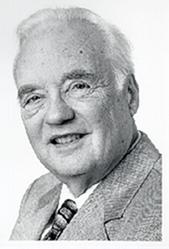Mendel Sachs
Mendel Sachs | |
|---|---|
 | |
| Born | April 13, 1927 Portland, Oregon, United States |
| Died | May 5, 2012 (aged 85) Buffalo, New York, United States |
| Nationality | American |
| Alma mater |
|
| Known for | Unified field theory |
| Spouse |
Yetty Herman (m. 1952) |
| Children | 4[1] |
| Scientific career | |
| Fields |
|
| Institutions |
|
| Thesis | Interactions in Paramagnetic Salts (1954) |
| Doctoral advisor |
|
Mendel Sachs (
Biography
Early life and education
Sachs was born in Portland, Oregon, the third son of a rabbi. When just four months old, Sachs moved with his family to Toronto, Canada, where he grew up and attended school.[2]
Sachs earned his bachelors at the
Career
Following the award of his PhD in 1954 Sachs first post-doctoral position was at the new
In 1956 Sachs became a senior scientist at
In 1964 while at
In the autumn of 1966 he was appointed professor of physics at State University of New York at Buffalo.
Sachs was an editor for the International Journal of Theoretical Physics.[11]
On his retirement in 1997 he was given the title Professor of Physics Emeritus.
Research
This article may be too technical for most readers to understand. (September 2017) |
Unified field theory
Sachs progressed towards completing Albert Einstein's unified field theory, i.e. unifying the fields in general relativity, from which quantum mechanics emerges under certain conditions.
His theory rests on three axioms. The general idea is (1) to make precise the
The result is a continuous
"The well known trouble with
Yet another phenomenon that Sachs' theory can accommodate (that standard cosmology might not) is the Huge-LQG large quasar group, since general relativity does not presuppose homogeneity or isotropy, i.e. the cosmological principle.
Sachs believed that fundamental incompatibilities between
Citations
References
- Lawrence Livermore National Laboratory (2012). "In Memoriam Mendel Sachs". llnl.gov. Lawrence Livermore National Laboratory. Archived from the original on 5 May 2017.
- Ram, Michael, ed. (1999). Fragments of Science: Festschrift for Mendel Sachs, Amherst, New York, USA, 7 September 1997. Singapore: World Scientific. ISBN 9789814527460.
- Sachs, Mendel. "About Me". mendelsachs.com. Dr. Mendel Sachs. Archived from the original on 13 July 2012.
- Sachs, Mendel (1969). "Space, Time and Elementary Interactions in Relativity" (PDF). Physics Today. 22 (2): 51–60. ISSN 0031-9228.
- Sachs, Mendel (2004). Quantum Mechanics and Gravity. The Frontiers Collection. Berlin: Springer Verlag. LCCN 2003059074.
- Sachs, Mendel (1982). General Relativity and Matter: A Spinor Field Theory from Fermis to Light-Years. Dordrecht: Reidel Publishing Company. LCCN 82007609.
- Sachs, Mendel (1986). Quantum Mechanics from General Relativity: An Approximation for a Theory of Inertia. Dordrecht: Reidel Publishing Company. LCCN 86017902.
- Sachs, Mendel (2002). "Cornelius Lanczos – Discoveries in the Quantum and General Relativity Theories". Annales Fondation Louis de Broglie. 21 (1): 85–92. Bibcode:2002quant.ph..6054S.
- Sachs, Michael (19 Jul 2012). "Obituary of Mendel Sachs (1927–2012)". Physics Today. .
- Spina, Mary Beth (18 August 1997). "UB Physicist Mendel Sachs to Be Honored At Symposium". buffalo.edu. State University of New York at Buffalo. Archived from the original on 5 May 2017.
- Tilton, Homer B.; Smarandache, Florentin (2005). Begin Adventure / How to Break the Light Barrier by A.D. 2079. Tucson, Arizona: Pima College Press. LCCN 2007530217.
